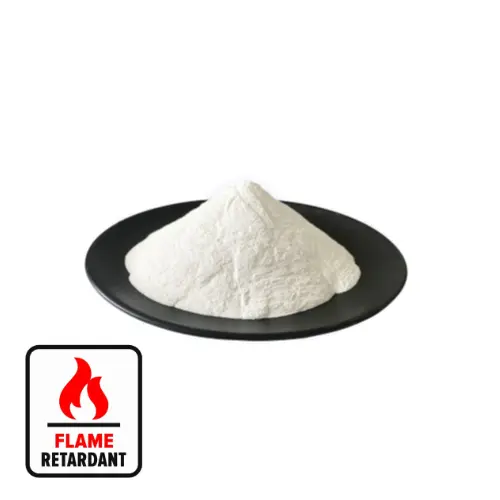Hebei Messi Biology Co., Ltd. said, in the development of flame retardant magnesium hydroxide, the United States, Japan and other countries in the country’s capacity has reached 10,000 tons. 1980s has been a lot of research and development in this area, after the mid-1980s into the production scale. Compared with them, China’s gap is about 15 years. According to the foreign situation in this regard, some of what problems?
1, magnesium hydroxide can be added up to 60%, there may be rubber, plastics, wire and cable and other materials, physical and mechanical properties have been reduced (especially tensile strength, bending strength and other mechanical strength changes). Therefore, how to reduce the amount of magnesium hydroxide, but also to maintain its high flame retardancy and good mechanical properties of flame retardant materials, is still a problem of foreign research.
2, in the polymer material after adding magnesium hydroxide, after a certain period of time, the absorption of carbon dioxide in the air and make the material appear whitening, especially on the color of the rubber, plastics, wires and cables and so on the impact is even greater. This whitening is called whitening phenomenon. It not only visually affects the appearance of flame-retardant materials, but also due to the absorption of carbon dioxide after part of the magnesium hydroxide into alkaline magnesium carbonate, it is also flame retardant, but not as flame retardant as magnesium hydroxide, and its mechanical properties have also been reduced. Therefore, foreign countries have studied the solution, that is, in the magnesium hydroxide additives (such as nickel oxide, etc.), it can not only inhibit the phenomenon of whitening, but also can produce a synergistic effect to improve the flame retardant effect. There are changes in the shape of magnesium hydroxide can also play a role in reducing the phenomenon of whitening, such as spherical magnesium hydroxide due to the smaller surface area, can play this role. Our work in this area has not been reported.
3, at present generally believe that magnesium hydroxide as a flame retardant must be surface treatment, but according to the United States company produced by the magnesium hydroxide without surface treatment, can be applied in PVC and other thermoplastics, after surface treatment, dispersion of improved performance of magnesium hydroxide, applied to a variety of polymers. From this point of view, whether the flame retardant magnesium hydroxide must be surface treatment, but also depends on the specific circumstances of the application.
The surface treatment of magnesium hydroxide is also related to its structure. If it is amorphous, the need for surface treatment of magnesium hydroxide becomes more important. If the crystalline structure of the main magnesium hydroxide, surface treatment of the problem is not so prominent. The reason is that the former specific surface area, and polymer compatibility is poor, the latter specific surface area is small, and polymer compatibility is better than the former.
4, the preparation of flame retardant magnesium hydroxide raw materials have 4 kinds, one is the use of magnesium ore (including magnesite, dolomite and rhodochrosite, etc.), the second is a variety of magnesium salts (including magnesium chloride, magnesium sulfate, etc.), the third is the bitter brine of seawater salt production, and the fourth is the brine of the salt lake.
From the production of high purity and lower cost of magnesium hydroxide considerations, Hebei magnesium Xi Biological Co., Ltd. said that seawater (including underground concentrated seawater) salt brine containing impurities is much lower than the magnesium ore and brine of salt lakes, purification process is simpler, easy to produce high-purity magnesium hydroxide (≥ 98%), and the latter in addition to impurities of the purification process is relatively more complex, the cost of some higher. If the use of higher purity magnesium salt production of magnesium hydroxide, can produce high purity magnesium hydroxide, but the cost is high, such as the use of lower purity magnesium salt as raw material for the production of magnesium hydroxide, the cost is still high. Therefore, comprehensive consideration of the results or the use of seawater (including underground concentrated seawater) salt brine as raw materials for the production of magnesium hydroxide is more appropriate.
5, in order to improve the flame retardant properties of magnesium hydroxide, in addition to the above method of magnesium hydroxide with surfactants for surface modification treatment, but also from the preparation of a variety of shapes of magnesium hydroxide to consider this is because of crystalline magnesium hydroxide has a small surface area, dispersion in polymers and compatibility is good, the United States, Japan and other countries have been studied. Japan in the late 1980s to the early 1990s, the development of a variety of product shape of magnesium hydroxide, they believe that the better is the spherical magnesium hydroxide, because of its specific surface area than the first two smaller, in the polymer dispersion and compatibility is better, with better mechanical properties (such as tensile strength, bending strength and bending modulus, etc.). Due to its small specific surface area, the effect of carbon dioxide absorption is relatively small, which can prevent the whitening phenomenon of flame retardant materials.
At present, domestic and foreign research on various functional and structural materials, but in the magnesium system of functional and structural materials, more research is magnesium oxide, research on magnesium hydroxide as a functional and structural materials are not much, of which the United States, Japan and other countries more research. Above mentioned different crystal shape of magnesium hydroxide is to play a better flame retardant and increase mechanical strength (the so-called reinforcing agent) of the dual role.
In the preparation of flakes, fibrous and spherical magnesium hydroxide method, Japan is the use of hydrothermal method, that is, the use of sodium hydroxide and magnesium salt solution to get colloidal magnesium hydroxide, and then

